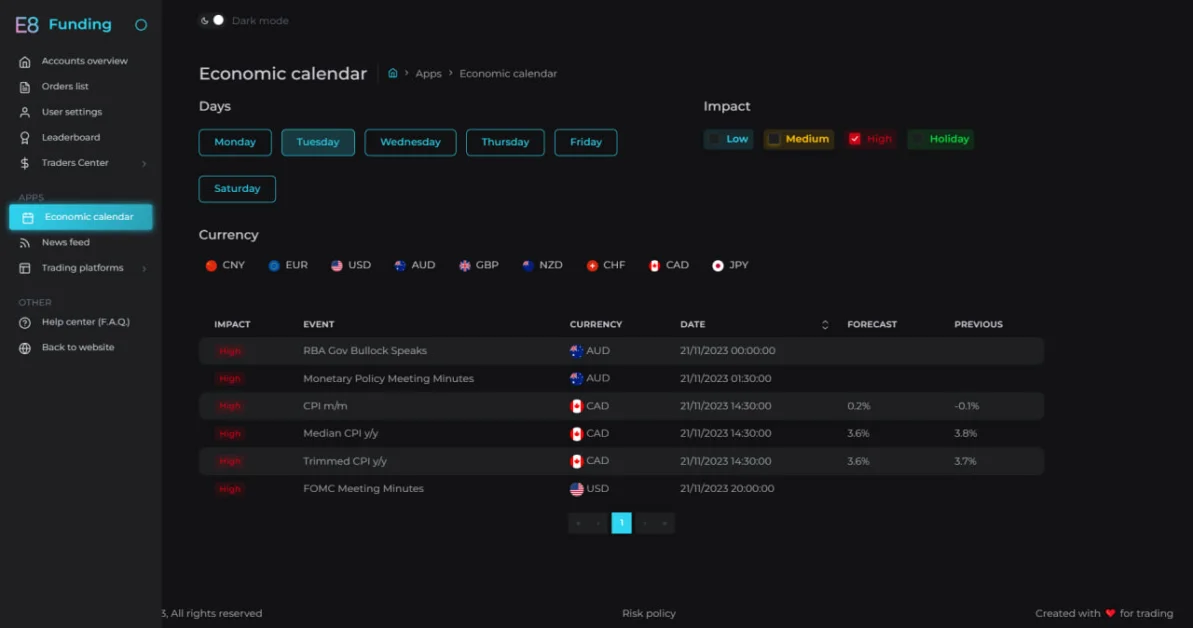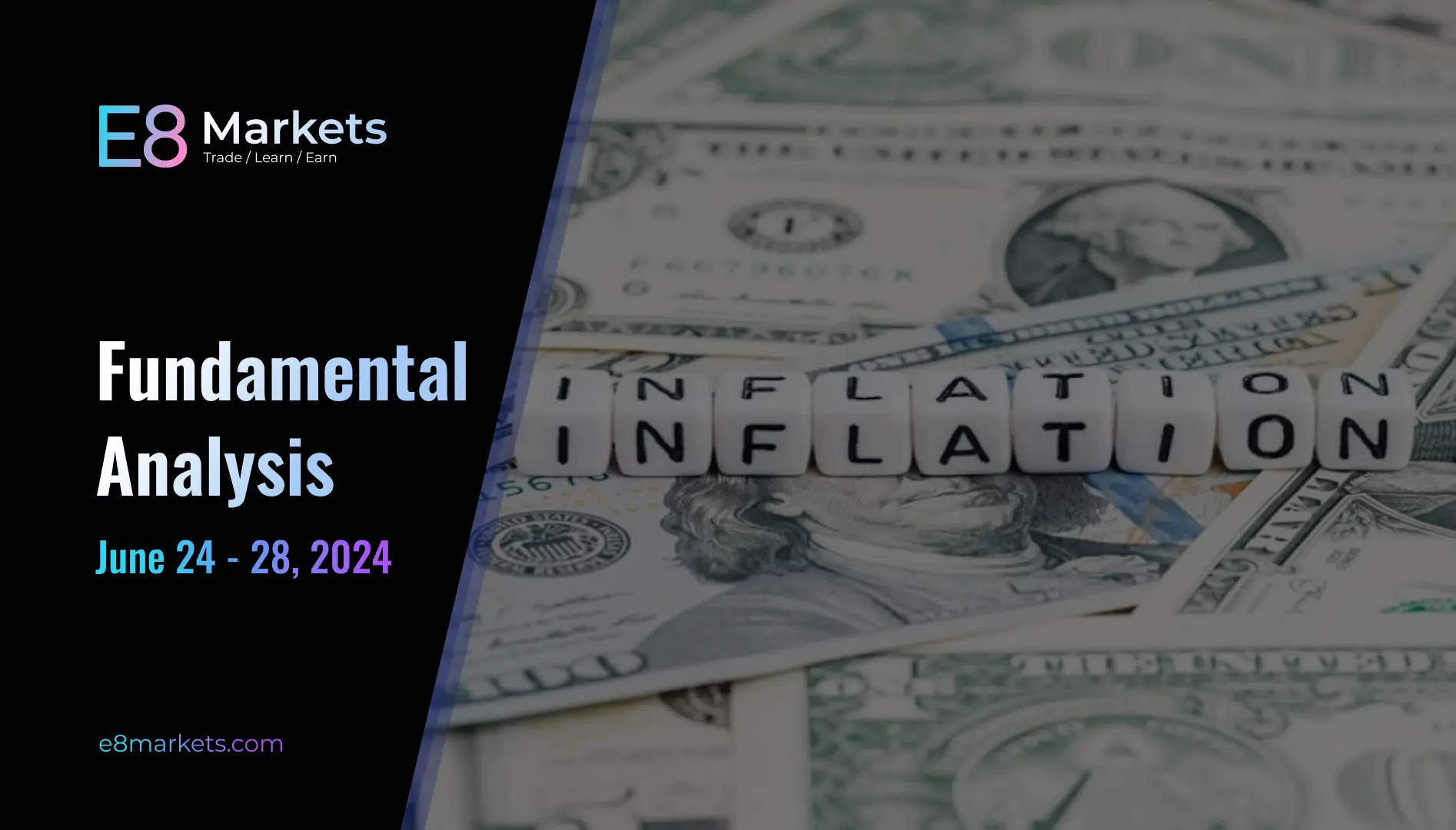Fundamental Analysis: ECB Decision and Lagarde’s Tone
Last week’s labor data sent ripples through the market, triggering notable volatility in currency pairs involving the US Dollar. The initial jolt came on Wednesday when the number of job openings was reported to have fallen by 237,000 to 7.673 million in July. This marked a significant decline from the downwardly revised 7.910 million in June, reaching the lowest level observed since January 2021 and falling below market forecasts of 8.10 million.
The market’s response was swift, with investors promptly selling the USD in anticipation of the upcoming Non-Farm Payroll (NFP) data. The prevailing expectation was for a disappointing NFP report, potentially signaling further weakness in the US labor market. This, in turn, could lead to a more dovish Federal Reserve and a heightened likelihood of a more aggressive 50 basis point (bps) rate cut.
The downward pressure on the dollar persisted into the following day when Initial Jobless Claims data showed a decrease of 5,000 individuals filing for unemployment benefits in the US. However, a turning point arrived on Friday when the U.S. Bureau of Labor Statistics released the highly anticipated NFP and Unemployment Rate data. The market reaction was somewhat mixed, leaning slightly in favor of the USD. Although the US economy added 142K jobs in August, surpassing the downwardly revised 89K in July, this figure fell short of market forecasts of 160K.
However, the market seized upon the more positive news regarding the unemployment rate, which eased to 4.2% in August from the October 2021 high of 4.3% in the prior month. This development was interpreted as a sign of a resilient labor market, prompting a recalibration of expectations towards a more moderate 25 bps rate cut. According to CME Group, the probability of a 25 bps cut currently stands at 75%, while the odds of a 50 bps cut have diminished to 25%. This shift in sentiment has injected a dose of optimism into the US dollar, propelling it to the position of the strongest currency so far today.
Canadian Dollar
In line with market expectations, the Bank of Canada (BoC) reduced its key interest rate by 25 basis points to 4.25% during its September meeting. The central bank attributed this decision to the need to address persistent excess supply in the Canadian economy, which continues to exert downward pressure on inflation.
Policymakers also voiced concerns about the possibility of undershooting inflation targets, adding to their worries about overtightening monetary policy. The Governing Council further emphasized the ongoing slowdown in the labor market, despite noting that wage growth remains elevated relative to productivity. However, the central bank acknowledged that inflation remains a concern, particularly in the shelter and selected services sectors, and highlighted the potential for upside risks to price growth.
Recent data released on Friday showed a rise in Canada’s unemployment rate to 6.6% in August 2024, its highest level since October 2021 and exceeding market forecasts of 6.5%. This development reinforces the notion that the BoC may continue its rate-cutting cycle as the labor market cools down, alleviating some inflationary pressures. The Canadian dollar has been underperforming lately, and if the BoC persists with its easing policy, there appears to be little prospect for a near-term rebound.
Australian Dollar
Undoubtedly, the Australian dollar emerged as one of the weakest currencies last week. A series of discouraging economic reports from Australia, including Wednesday’s GDP growth rate, contributed to this decline. The Australian economy expanded by a mere 0.2% quarter-over-quarter in Q2 2024, falling short of market expectations of 0.3%. This sluggish growth marks the third consecutive quarter of stagnation. Furthermore, on an annual basis, the economy contracted by 0.3%, further deviating from market projections.
This lackluster performance, coupled with Australia’s high inflation rate (on par with New Zealand), places the Reserve Bank of Australia (RBA) in a challenging position. If the central bank refrains from cutting interest rates, the economy risks further contraction. However, initiating rate cuts while inflation remains elevated could exacerbate the situation, creating additional difficulties for policymakers.
This prevailing uncertainty has empowered bearish sentiment, and until the economic outlook becomes clearer, the AUD may struggle to attract buyers.
Now, let’s shift our focus to the upcoming week and examine the potential market impact of key economic releases.
Confidence in Australia (Tuesday)
This week, additional data from Australia will shed light on consumer and business sentiment. The Westpac Consumer Confidence Index and the NAB Business Confidence Survey will provide insights into how Australians perceive current economic conditions and their expectations for the future. The NAB survey, in particular, gauges business outlook based on factors like trading conditions, profitability, and employment expectations. If both surveys reveal weak confidence levels, the Australian dollar is likely to remain under pressure and continue its downtrend this week.
UK Labor Market Data & Economic Activity (Tuesday – Wednesday)
Tuesday morning brings crucial UK Unemployment Rate and Average Earnings figures, data that the Bank of England (BoE) will closely scrutinize ahead of its interest rate decision next week. A decline in both metrics, as currently anticipated by the market, could suggest a tightening labor market and upward wage pressure. This might lead to a slightly more hawkish BoE stance and a strengthening of the pound.
On Wednesday, following the labor market data release, the UK will unveil its monthly GDP change along with Industrial and Manufacturing production figures, offering a comprehensive overview of the UK economy’s health. The BoE will carefully analyze these data points. Any signs of economic weakness could prompt the BoE to consider easing its monetary policy, providing relief to consumers and businesses to stimulate economic growth. Conversely, if the UK demonstrates resilience and continued economic expansion, the BoE may be less inclined to provide such relief, potentially triggering a bullish reaction in the pound.
Inflation in the United States (Wednesday)
Wednesday brings the release of highly anticipated US inflation data, following last week’s mixed labor market signals. While the market currently favors a 25 basis point rate cut by the Federal Reserve, a surprisingly low inflation reading could significantly impact next week’s interest rate decision. A substantial decline in US prices might fuel expectations of a larger, 50 bps cut, potentially leading to a short-term weakening of the dollar. Conversely, an inflation print exceeding forecasts could reinforce the case for a 25 bps cut and strengthen the US dollar.
ECB Interest Rate Decision (Thursday)
The pivotal economic event this week is undoubtedly the ECB’s interest rate decision. A 25 basis point rate cut is widely anticipated and won’t surprise market participants. However, the focus will be on the tone adopted by policymakers, particularly ECB President Christine Lagarde, regarding the future trajectory of monetary policy.
Traders will be keenly observing for any signals of a potential shift in the ECB’s rate-cutting cycle. A delay in further cuts, suggesting a more cautious approach, could strengthen the euro. Alternatively, indications of a sustained easing policy due to stabilizing prices could weigh on the euro in the short term.
Our assessment suggests that the ECB, while maintaining its independence from other central banks, is likely to adopt a wait-and-see approach until the Fed’s rate decision. This strategy would likely involve keeping the euro relatively strong by signaling a continued focus on monitoring inflation developments.
Good luck to all E8 Traders in the coming week! For deeper insights, be sure to visit our YouTube channel, where our fundamental analyst Ken shares his expertise on this week’s key economic news and events. And don’t hesitate to join our Discord server for real-time market discussions!
E8X Dashboard
If you’re new to our Economic Calendar, explore our detailed guide to learn more!
The Trader’s Toolbox: Mastering the Economic Calendar
Stay ahead of key economic events and data releases with our E8X Dashboard. It’s all there under the Economic Calendar tab, offering a user-friendly interface for your convenience.

Article topics
Trade with E8 Markets
Start our evaluation and get opportunity to start earning.Suggested Articles:
Disclaimer
The information provided on this website is for informational purposes only and should not be construed as investment advice. Always conduct your own research and consult with a qualified financial advisor before making any investment decisions. We do not endorse or promote any specific investments, and any decisions you make are at your own risk. This website and its content are not responsible for any financial losses or gains you may experience.
Please consult with a legal professional to ensure this disclaimer complies with any applicable laws and regulations in your jurisdiction.








